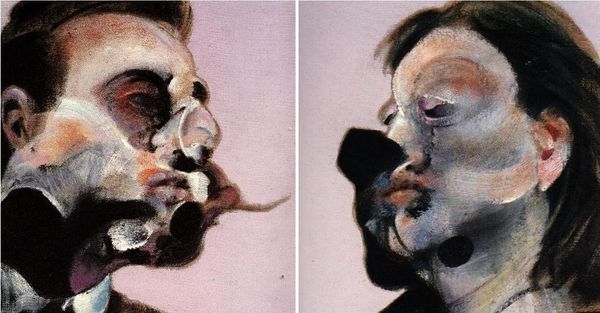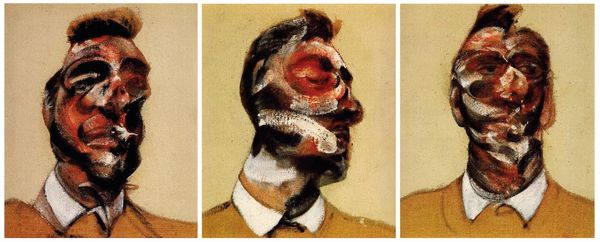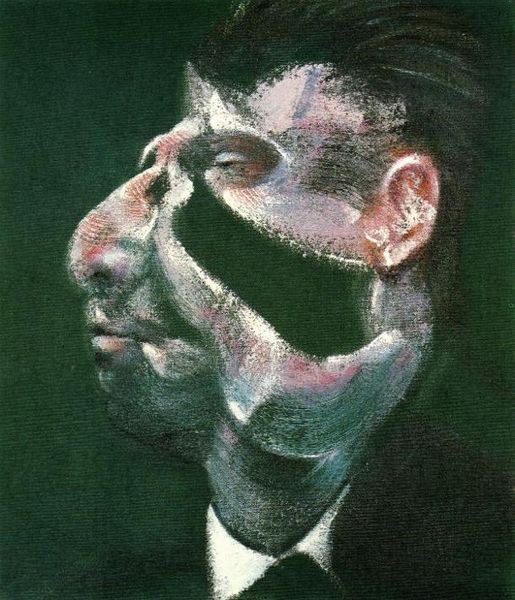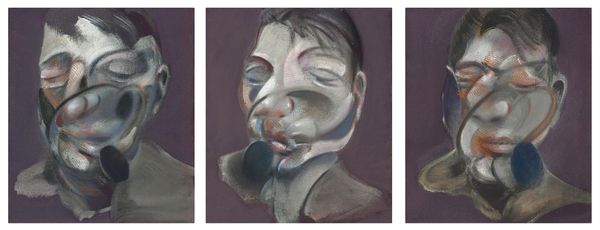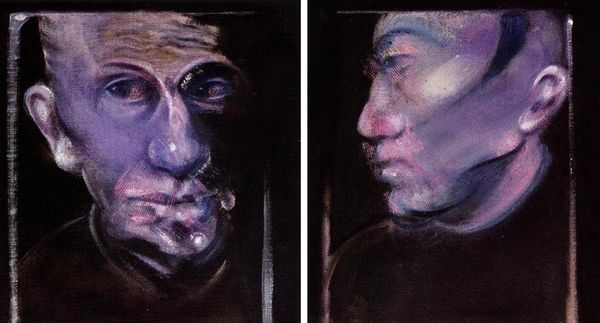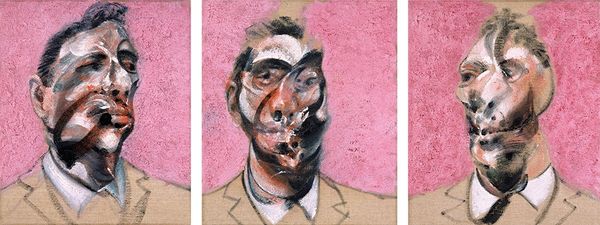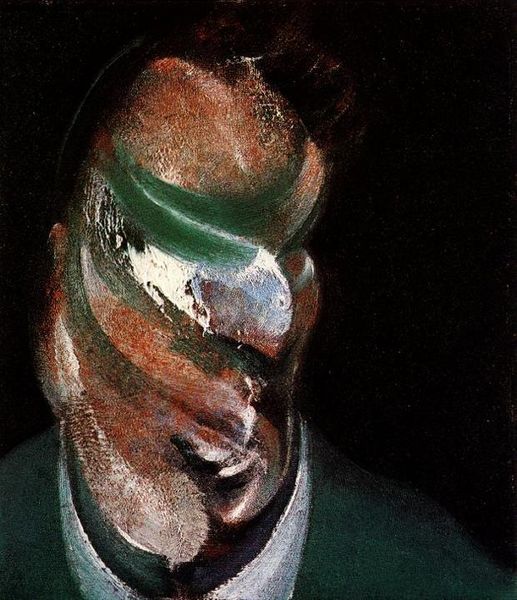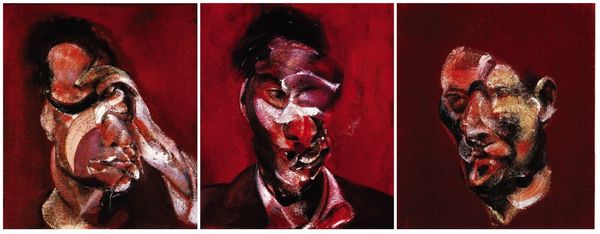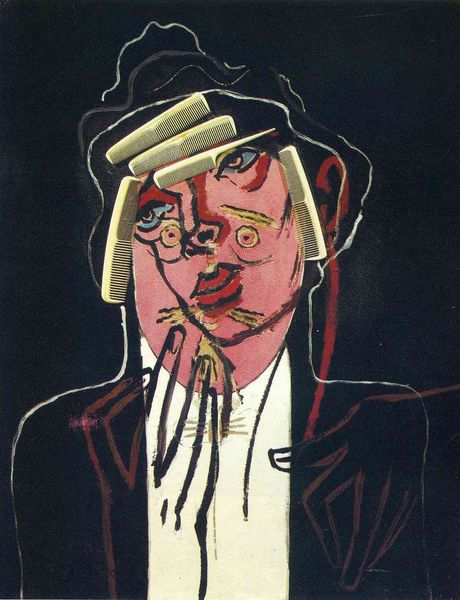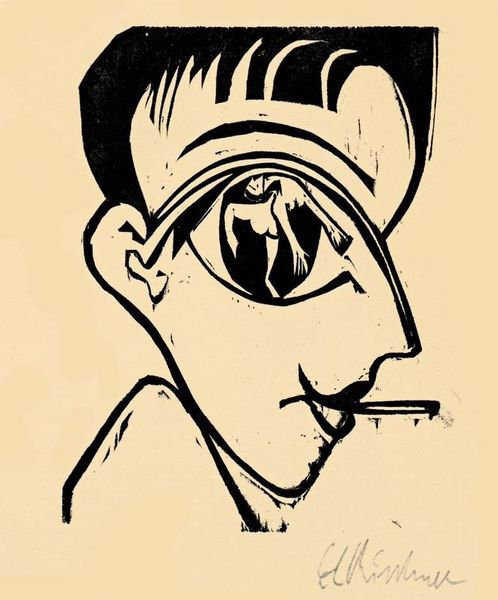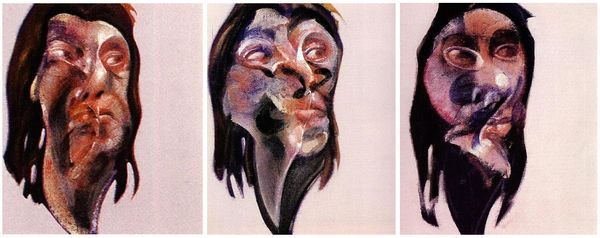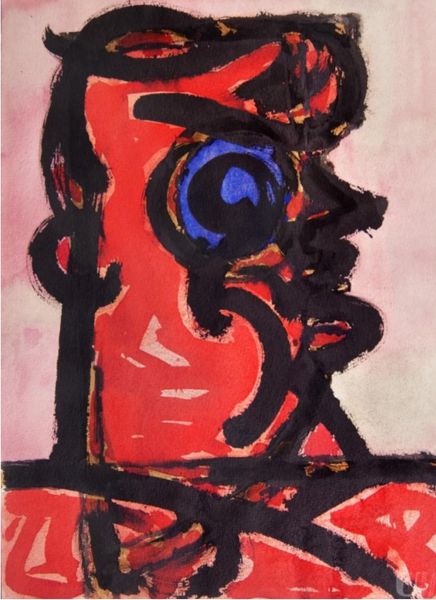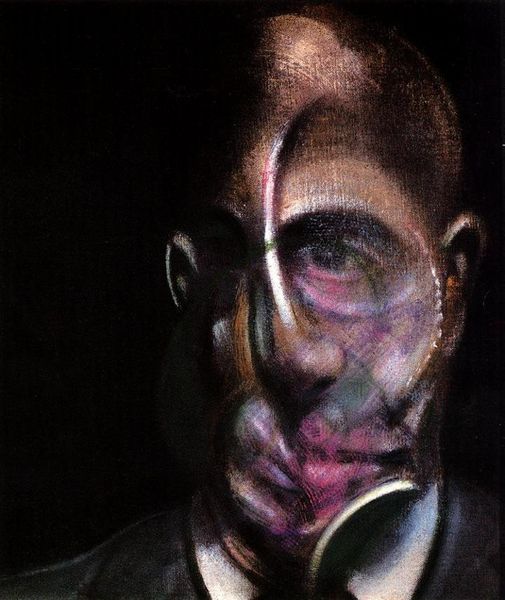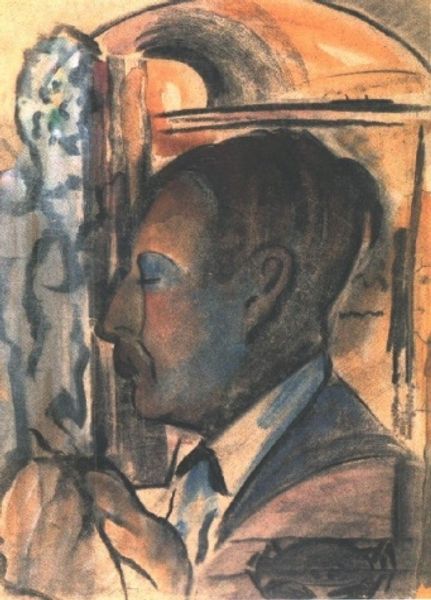
Copyright: Francis Bacon,Fair Use
Editor: Francis Bacon's "Three Studies for a Self-Portrait," painted in 1969, is a striking oil triptych. What hits me first is the sheer rawness of it – the distorted features, the almost violent application of paint. It's incredibly unsettling, almost confrontational. What do you see in this piece, considering the context of when it was made? Curator: The unease you describe is quite deliberate. Remember, 1969 was a turbulent year, politically and socially. Bacon's work often reflects anxieties of the time, but filtered through his own personal experiences and, importantly, through the lens of art history. He's grappling with the tradition of portraiture, especially the idealized self-image. Editor: So, it’s like he's rebelling against that? Curator: Precisely. Think about who traditionally had their portrait painted and why. Power, status, posterity – Bacon dismantles all that. The grotesque distortions serve as a commentary on the instability of identity, perhaps especially male identity, in a period marked by challenges to authority and social norms. The portrait, once a symbol of power, becomes a mirror reflecting societal anxieties. Do you notice how the backgrounds isolate the figure? Editor: Yes, they really push the subject forward, as if these figures are caught and isolated by a penetrating and unsentimental gaze. Curator: That isolation speaks volumes about the human condition as Bacon perceived it – a world often devoid of meaningful connection despite being surrounded by society and, by the end of the 1960s, an ever more mass mediated world. Also notice his fascination with how images circulate – his heavy reliance on mass-produced photographs as source material. Editor: So, he’s showing us the uncomfortable truth behind the mask, the pressures and anxieties hidden beneath the surface, reflected by the context? I never considered how the medium he employed could make such a political statement. Curator: Precisely. Looking closely can reveal not just what is seen, but how the culture impacts perception, image-making, and even how we come to know ourselves.
Comments
No comments
Be the first to comment and join the conversation on the ultimate creative platform.
